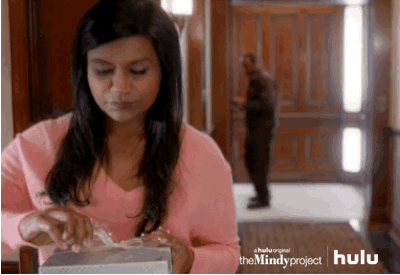Is Glitter Edible? The FDA Recommendations For Glittery Foods Urge You To Read The Labels

Over the weekend, my friends and I decided to bake some super festive sugar cookies to get ourselves in the holiday spirit. Of course, once our treats came out of the oven, we had to frost the sh*t out of those suckers and generously coat each cookie in glitter-infused sprinkles. Not one of us thought about the fact that glitter isn’t always edible because, uh, where’s the fun in that? The thing is, though, it’s true: As a recent announcement from the FDA points out, it’s best to double-check the label on your glitter when you’re mixing it with food this holiday season to make sure you’re not accidentally eating something toxic.
On Friday, Dec. 14, the FDA issued a consumer update to let people know that "some decorative glitters and dusts promoted for use on foods may, in fact, contain materials that should not be eaten." That’s right, y’all: While glittery foods will definitely make your Insta feed pop (you’re kidding yourself if the Reynolds glitter turkey recipe didn’t catch your eye over Thanksgiving), not all are actually safe to consume, so it’s important to know the difference as you’re enjoying all of your festive treats this holiday season.
"There are some glitters and dusts that are edible and produced specifically for use on foods," reads the FDA’s update. "These products are made from ingredients that may be safely eaten. But others may not."
Here’s the thing: It’s not like you have to stop eating all glitter-infused treats. Rather, what the FDA is recommending is that you simply use an extra bit of caution and care when it comes to determining what kinds of glittery embellishments are edible, and which just aren’t safe for your body.
An easy way to do this, according to the FDA, is to always make sure you’re carefully checking the labels of any decorative products —sprinkles, little stars, little hearts, the whole nine — that you’re including in your baked goods and holiday foods. "Companies that make edible glitters and dusts are required by law to include a list of ingredients on the label," the FDA’s update explains, so if anything on the label looks sketchy or doesn’t include any common, edible-glitter ingredients (such as sugar, acacia/gum arabic, maltodextrin, and cornstarch, as per the FDA), you might want to steer clear.
In other words, if your little cousin bursts into the kitchen while you’re baking and begs you to use that giant bottle of glitter you got from Michaels in your recipe, tell her you guys have to make a pit stop at the grocery store first, cause that arts-and-craft stuff won’t cut it for your tastebuds.
"Most edible glitters and dusts also state ‘edible’ on the label," the FDA’s update notes. "If the label simply says ‘non-toxic’ or ‘for decorative purposes only’ and does not include an ingredients list, you should not use the product directly on foods."
This is, of course, if you’re making your own glittery treats at home. If you’re purchasing sparkly holiday foods from a bakery or elsewhere, the FDA recommends talking to the owner and inquiring about the safety of the bedazzled toppings on your baked goods.
And if, after taking all of these precautionary measures, you’re still unsure about whether your glitter-infused holiday food is OK to eat or not, I personally think it’s better to be safe than sorry. If you ask me, whether it’s sugar cookies or a roast turkey, I think it’ll taste perfectly fine without looking like everyone’s NYE dresses just threw up all over it, you know what I mean?
Source: Read Full Article

